Former TSA Communications Lead Joins the NAM

Former Transportation Security Administration Assistant Administrator for Strategic Communications and Public Affairs Alexa Lopez has joined the NAM’s communications team.
What’s going on: Lopez, a native of Dayton, Ohio, is the NAM’s vice president of communications and public affairs, a newly created position.
- “Alexa knows how to navigate complex challenges, craft compelling narratives and drive real impact,” NAM President and CEO Jay Timmons said. “She has built a career on delivering results, and manufacturers will benefit from her ability to elevate our industry’s voice at a time when manufacturers’ influence on the future has never been more important.”
- Lopez holds a Master of Public Affairs and a Master of Arts in Arts Administration from the Indiana University O’Neill School of Public and Environmental Affairs.
Proven track record: At the TSA, Lopez led all media operations, strategic communications, marketing and branding and multimedia efforts and served as adviser to the TSA administrator. She was at the agency for four years.
- Prior to that, Lopez worked in public affairs at the Federal Emergency Management Agency, the American Society of Civil Engineers, Ogilvy Public Relations and the City of Bloomington, Indiana.
Milo’s Tea Has a Recipe for Sustainability

At Milo’s Tea, every element of the company’s delicious beverages is scrutinized for sustainability opportunities—from bottle-sourcing to the water and tea leaves that go into each gallon.
The bottles: The Bessemer, Alabama–based business recently opened a new, one-gallon bottle-blowing facility in its hometown, right next to its distribution center.
- The new facility will reduce carbon dioxide emissions by 1,000 metric tons per year, since it will eliminate the need for trucks to travel from farther-off bottling locations to the Bessemer distribution facility.
- “We’re still family-held, and sustainability is a family value, too,” said Chief Operating Officer Chris Droney. “When you have a project like this, that has a positive environmental impact and allows us to reinvest in our company growth, that’s a win–win.”
The water: The 78-year-old Milo’s Tea—which in 2022 became the top-selling refrigerated tea brand in the U.S. and is the fastest-growing refrigerated lemonade brand—has a strong track record of environmental resource preservation, starting with its water conservation.
- Since 2019, Milo’s has conserved nearly 37 million gallons of water, an achievement that has helped earn the certified woman-owned business two Platinum TRUE Zero Waste certifications (one for its Bessemer plant and another for its Tulsa, Oklahoma, facility).
- Among other measures, the company has invested in new, more water-efficient line-cleaning (clean-in-place) technology, which it uses between production runs to clean the brew, blend and filler equipment. “If we’re going from making sweet tea to zero-calorie tea, for example, it’s very important to make sure there’s no residue” in the lines, Droney explained.
- The enhanced equipment reduces energy, water and cleaning agent consumption, while also improving the effectiveness of the cleaning cycle. Milo’s made additional improvements to the production scheduling process, which decreased the total number of cleaning cycles required and further reduced energy, water and cleaning agent consumption.
- Milo’s was also able to reduce the amount of excess product the company had in its tanks during those flavor switchovers, further reducing waste and water use.
The tea: Milo’s earned its Oklahoma Zero Waste certification in part through “re-earthing” its tea leaves—“the largest waste stream we have”—in partnership with GEM Dirt, Droney said.
- The topsoil company takes Milo’s spent tea leaves and turns them into compost that it blends with dirt to create nutrient-rich soils. In 2023, Milo’s re-earthed more than 10,000 tons of used tea leaves from all facilities.
The packaging: When it comes to packaging, Milo’s doesn’t let dents stand in its way. The firm has installed compressed air stations on its lines to un-dent damaged bottles before they’re filled, so that none are thrown away.
- “At our flagship facility in Bessemer, if bottles can’t be undented, we send them back to the manufacturer and they can be reground and made into new bottles,” Droney continued. “A recycled bottle uses less resin than a new one.”
The production process: Milo’s has also recycled and diverted more than 148,000 tons of waste since 2019, another reason it has been so highly certified. On top of that, it has prioritized renewable energy sources at its facilities.
- Solar panels went live at the Bessemer plant in 2023, and this past summer, the business commissioned a rooftop solar farm at its Tulsa facility.
- The panels offset from 5% to 10% of each site’s total annual energy consumption, Droney told us. More solar panels are scheduled for other Milo’s sites, he added.
Advice for other manufacturers: Careful environmental stewardship can pay dividends for manufacturers, according to Droney.
- Profitability and sustainability “go hand in hand; we really believe that,” he said. “Solar power, onsite bottle blowing—there’s a cost to it, but there’s also a benefit. When you combine those, not only are you doing the right thing, but you’re generating fuel for future growth. We all have a responsibility to drive sustainability.”
Hyzon Reimagines Transportation

If you ask the leaders at Hyzon what kind of company it is, the answer might surprise you. The business, which manufactures “high-performance hydrogen fuel cell systems,” doesn’t consider itself just a manufacturer.
Making things possible: “We are a clean technology company that makes it possible to provide emissions-free power to some of the most difficult applications out there,” said Chief Operating Officer Dr. Bappaditya Banerjee. “It just so happens we are starting with Class 8 and refuse trucks.”
- In September, the Bolingbrook, Illinois–based firm announced the start of production of its single-stack, 200-kilowatt fuel cell systems to power those heavy-duty hydrogen fuel cell trucks. Hyzon is the only U.S. producer of the single-stack 200-kilowatt fuel cell.
- The new system is an upgrade from the 110-kilowatt fuel cell assemblies that Hyzon used in its first-generation vehicles.
- “If we were to put together two 110-kilowatt fuel cells to get to 200 kilowatts, the single-stack system would be 30% lighter than two110-kilowatt systems, as well as 25% cheaper to produce,” Banerjee said.
A differentiator: The company aimed to scale up the power of the engine without also significantly scaling up the size—no easy task. So Hyzon developed a proprietary solution: its hybrid bi-polar plate technology.
- “Most [fuel cell] stacks are either metal or carbon, but ours are hybrid,” Banerjee explained. “By hybrid, we mean that the cathode—where the oxygen comes into the system—is carbon, while the anode side is metal. The carbon side is more corrosion resistant while the metal side is strong, rigid and easier to manufacture, which allows a compact design.”
- “It’s the structure of the plates and the unique 200-kilowatt, single-stack design that allowed us to make it small enough to fit under the hood of a truck,” added Hyzon Vice President of Global Engineering Ravi Desai. “What does this is the design combination of our Membrane Electrode Assembly, the bi-polar plates and the compact balance of plant,” he said, referring to the network of pipes, hoses and fittings necessary for the fuel cell stack to work.
Uses and range: Hyzon offers two different emissions-free, heavy-duty vehicle types for industrial and commercial use, including a refuse collection truck. The models boast driving ranges comparable to those of diesel-powered trucks.
- The Heavy Duty Class 8 Fuel Cell trucks can typically go 350 miles from full storage tanks to empty, while the Fuel Cell garbage trucks can do a full day of work (at least 1,200 trash bin lifts and 125 miles of driving range) on a full tank.
- The trucks take about 15 to 20 minutes to refuel with a fast-fill dispenser at 350 bar, the pressure of the hydrogen gas needed to fill the trucks.
A challenge: In the U.S., the only publicly available hydrogen fuel refilling stations are in California, restricting widespread adoption for now. Meanwhile, the cost of filling up can be high.
- To support the construction of stations around the country and lower prices, the Biden administration announced $7 billion in funding last year for regional clean hydrogen “hubs.”
- In addition, the Inflation Reduction Act created the 45V hydrogen production tax credit, designed to help jumpstart scalable and sustainable domestic hydrogen fuel production.
- The credit is not yet available to companies, however, as the administration works to issue final regulatory guidance. The NAM has worked tirelessly to ensure this guidance is as broad, flexible and fair as possible.
Good for everyone: Hyzon doesn’t want to be the only player in the hydrogen ecosystem. On the contrary, it welcomes competition for the good of consumers and the industry.
- “The number of people who have been able to provide something useful [in transportation] using hydrogen is so limited that the more of us who succeed, the more it allows for hydrogen to become a normal part of our infrastructure,” said Banerjee. “A rising tide lifts all boats.”
NAM Co-Hosts Second Annual North American Manufacturing Conference
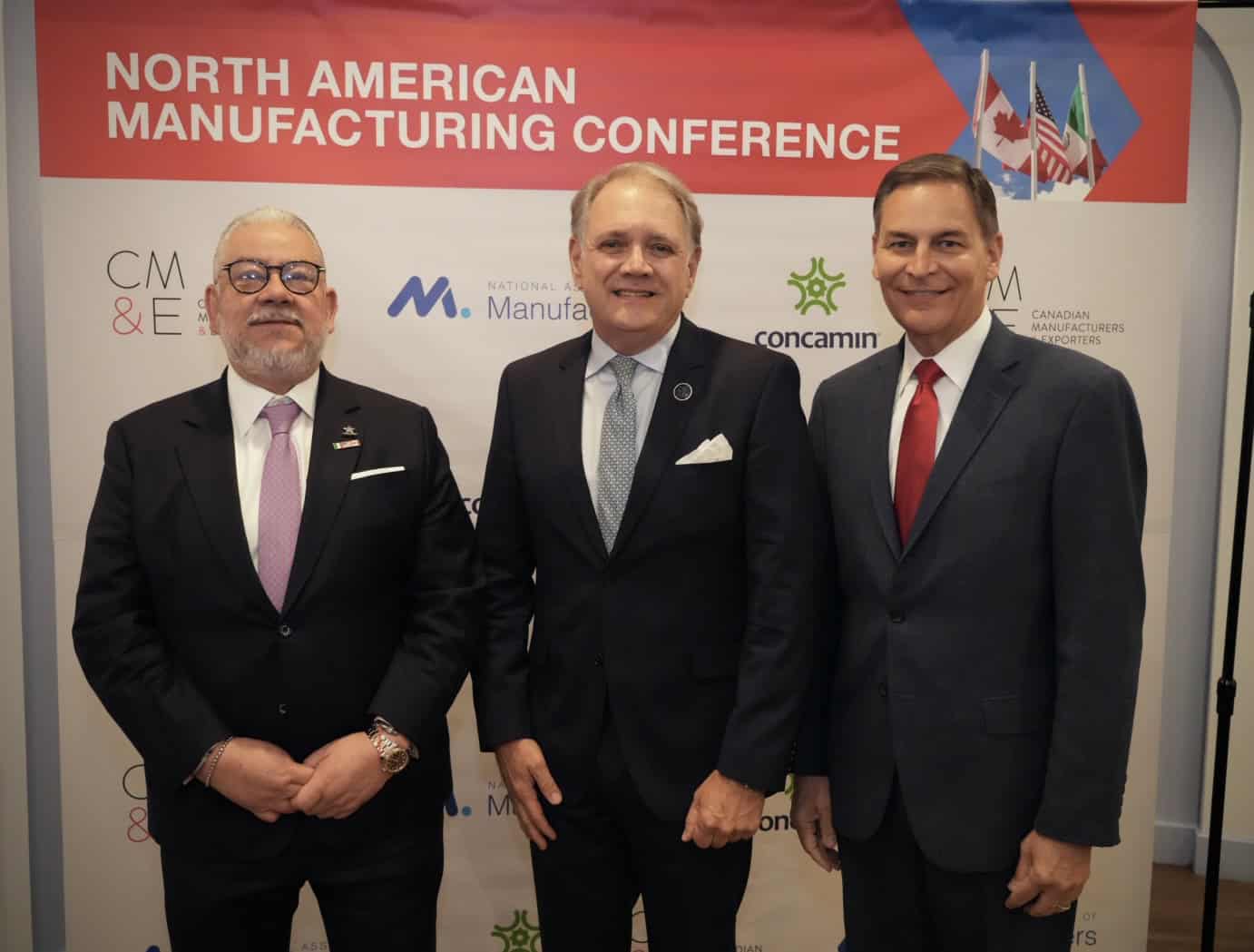
The NAM co-hosted the 2024 North American Manufacturing Conference on Tuesday and Wednesday in Ottawa, Canada, along with the Canadian Manufacturers & Exporters and the Confederation of Industrial Chambers of Mexico. This year’s conference kicks off the NAM’s advocacy push ahead of the expected review of the United States–Mexico–Canada Agreement.
Well-timed: The conference was timely, as President-elect Trump on Wednesday night announced his nomination of former U.S. Rep. Pete Hoekstra (R-MI) as the next U.S. ambassador to Canada—and touted the USMCA.
- Said NAM President and CEO Jay Timmons following the news: “We appreciate [President-elect Trump]’s foresight in prioritizing the U.S.–Canadian relationship and negotiating the USMCA, a trade deal that has been essential to the strength and success of manufacturing across North America. We look forward to working with [Hoekstra] as the next U.S. ambassador to Canada.”
- The conference also came just a day before significant news from Mexico: that its lower house of Congress approved a spate of constitutional reforms proposed earlier this year by former President Andrés Manuel López Obrador.
- Some of the reforms—which include the dismantling of several independent public regulatory agencies and restrictions on U.S. participation in the energy sector—appear to violate Mexico’s obligations under the USMCA.
“A crucial moment”: “[T]his conference is happening at … a crucial moment,” Timmons told event attendees on Tuesday. “We need to be clear-eyed about what we’re up against as we forge a more resilient and stronger North American manufacturing economy. Our associations and companies are at the vanguard. It will be up to us to make the case for vibrant economic ties and trade between our countries.”
Strong trade ties needed: The USMCA was a main topic at the conference, which consisted of multiple panel discussions and fireside chats with officials, experts and journalists from the U.S., Mexico and Canada.
- In talks on Tuesday with reporters from CNN and Canada’s Globe and Mail, Timmons highlighted the results of a recent joint NAM–CME-CONCAMIN survey. It found that “86% of [North American] manufacturers expressed strong support for extending the CUSMA/USMCA/T-MEC agreement when it comes up for review.”
- The conference’s panel events focused on different aspects of the USMCA. Speakers on one panel talked about key opportunities and challenges for the agreement in a shifting global landscape, while those on another keyed in on the effectiveness of the USMCA four years after its inception.
Speaker list: Event speakers included ExxonMobil Senior Vice President and NAM Executive Committee member Neil Chapman, U.S. Department of State Acting Assistant Secretary of Economic and Business Affairs Amy Holman, CONCAMIN President Alejandro Malagón Barragán, Canadian Minister of Innovation François-Philippe Champagne, CEMEX Vice President of Corporate Affairs Carlos Garza Galán, veteran POLITICO reporter Doug Palmer and many others.
- NAM Vice President of International Policy Andrea Durkin moderated a panel on the USMCA review. It featured Martinrea International Executive Chairman and Co-Founder Rob Wildeboer, 3M Government Affairs Head for the United States and Canada Elise Maheu and Xignux Public Affairs and Institutional Relations Director for the United States Iván Rivas.
- “The review is a novel mechanism in a trade agreement,” Durkin said after the conference. “Manufacturers in North America base their long-term plans on the benefits of the USMCA. They want the three governments to avoid a scenario that creates significant business uncertainty.”
Ministerial meetings: Timmons—who appeared Wednesday on CBC News’ “Power & Politics” to discuss the likely impact of the U.S. elections on North American trade—also spoke one-on-one to Canadian Minister of Labor and Seniors Steven MacKinnon and Minister of Energy Jonathan Wilkinson.
- Timmons thanked MacKinnon for the Canadian government’s intervention in the recent bicoastal Canadian port strikes, which reopened the points of entry, as well as his intervention to end a rail stoppage in the country.
- In his discussion with Wilkinson, Timmons told the energy minister the U.S. and Canada should “build cross-border relationships” to share access to critical minerals and materials including copper, lithium, uranium and graphite.
The final say: “North America’s integrated manufacturing system is the envy of the world,” Timmons said at the event. “We hold a competitive edge globally—and we can keep it if our governments stay true to the commitments set forth in the USMCA.”
How Manufacturers Can Save Millions Through Incentives Programs
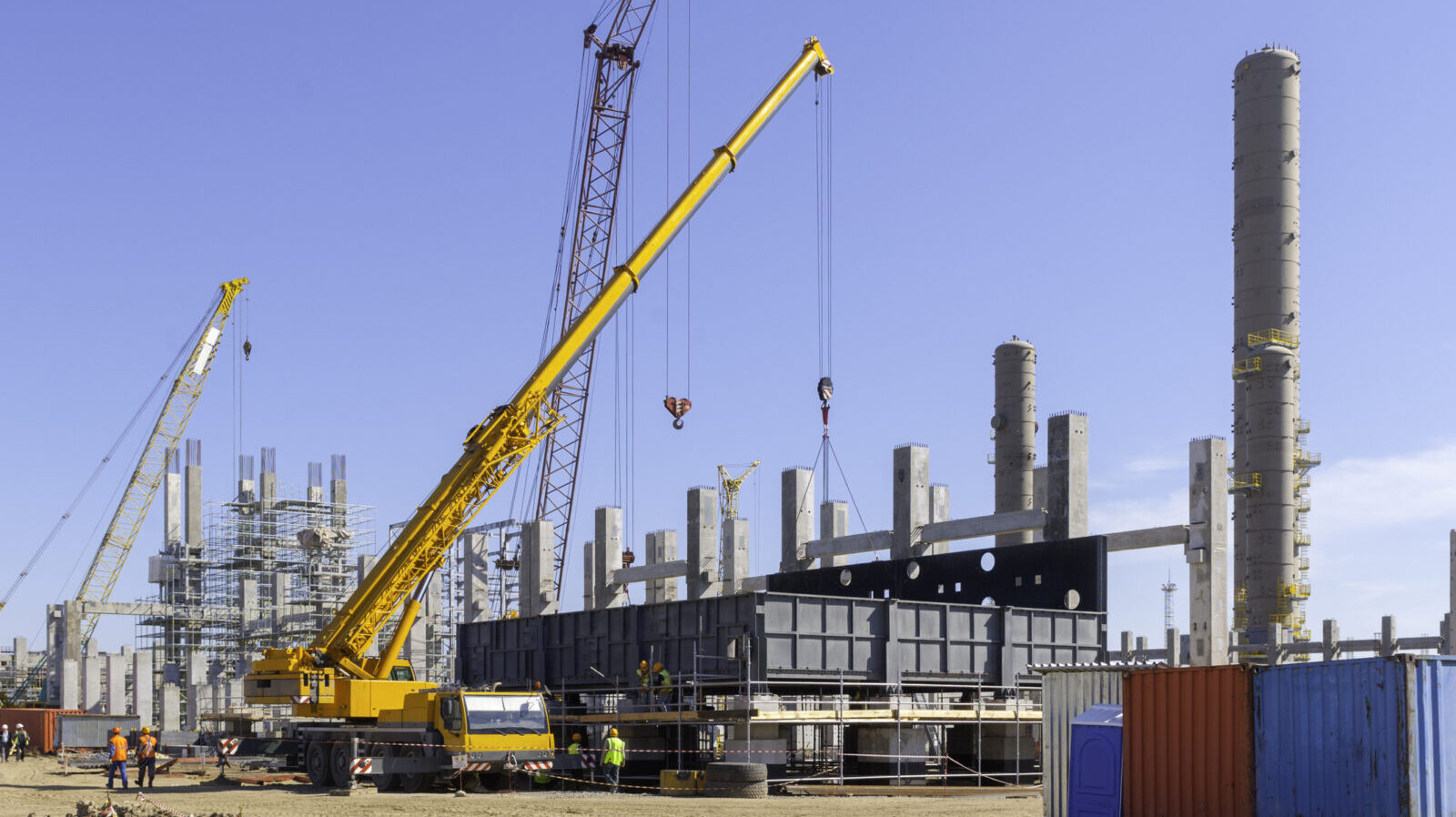
“$80 billion is given away every year in state and local incentives,” according to Atlas Insight Managing Partner Brian Corde. “Plus, the Biden administration has added $455 billion just in federal grants.”
In this investment landscape, manufacturers need all the help they can get finding, applying for and complying with these incentive programs. Atlas Insight, the NAM’s partner for its Incentives Locator, walks companies through this entire complicated process.
Last week, we talked to Corde and Kathy Mussio, Atlas’s other managing partner, about how companies select their new sites. This week, we’ve asked them what manufacturers need to know about incentives.
How do incentives work? Incentives come in two forms, Corde and Mussio explained. First is the type you automatically qualify for if you meet the requirements, known as statutory or as-of-right incentives.
- The second is the type that Atlas lends its expertise to—discretionary incentives. These programs offer funds and other pools of money that require business cases, negotiation, applications, and later, proof that a company has met its stated obligations (also known as compliance).
- These programs can take many forms. As Mussio put it, “Some states have programs that offer cash to help close the financial gap between two competing locations or increase a project’s ROI—helping to make a location more competitive in the financial analysis.”
- There are many, many incentives out there, the Atlas partners told us, and the most important steps are understanding which ones a company may be eligible for and helping clients quantify the potential savings.
What if you’re staying put? These incentives aren’t just for new facilities, Corde and Mussio emphasized. “A majority of incentives are given to companies staying in place,” Corde added.
- Companies can take a lot of actions to qualify for incentives—expand their workforces, buy new equipment, train workers in new technologies or add square footage for new production lines.
- “It’s our job to help NAM members identify their projects that could use incentives. Then we benchmark the incentives, then negotiate on the companies’ behalf, then lock the incentives down with the state or city,” Corde said.
What’s benchmarking? Atlas compares incentive offers from states and localities with the incentives awards that similar companies have received in the past, another way to help ensure that their clients get the best possible deals. There’s always room for negotiation, the partners say.
- Atlas keeps two databases: the first, a listing of all the incentives that exist on the federal, state and local levels, along with all the necessary forms, key contacts and any other requirements. The second database is a list of what other companies have received for similar types of projects.
- This allows Atlas to identify the typical dollar range that an incentive should provide—so a company knows whether it has been offered a good deal, and whether it should negotiate, or even go elsewhere.
How do you get the money? After companies successfully secure an incentive award, they must follow compliance schedules to ensure they keep receiving the funds as project milestones are met, while also retaining documentation in case of audit.
- The government offering the incentive typically requires filings to verify how many employees were hired, the wages they earned, even the employers’ contributions to health insurance premiums.
A lot to lose: “We are being conservative when we say that 50% of incentives awarded never pay out,” Corde said, all because companies fail to fulfill compliance requirements.
How can Atlas help? Atlas creates a “holistic incentive management for its clients, for the entire life of the incentive,” so that companies actually receive their money, the partners explained. It even helps with old incentives that remain incompletely documented.
- “When we retained Atlas, it enabled us to bring several one-off incentive agreements around the U.S. into a centralized process,” said a Schneider Electric spokesperson. “That made it so much easier for us to document our part of the expansion agreements and collect the incentives we were owed. Plus, their performance-based fee for this process has been best in class.”
How to get started: The NAM Incentives Locator is a service for NAM members, which provides a complimentary initial assessment call and preferred rates on contracted services, including an exclusive success-based fee schedule.
- Atlas is often “only paid for successful outcomes, either a confirmation letter or when the company receives the money over time. We will help you be successful and then benefit once you are,” said Corde.
The bottom line: “You need to have a strategy to go after these incentives, because your competitors are.”
Lucid Revs Up the Domestic Graphite Supply Chain
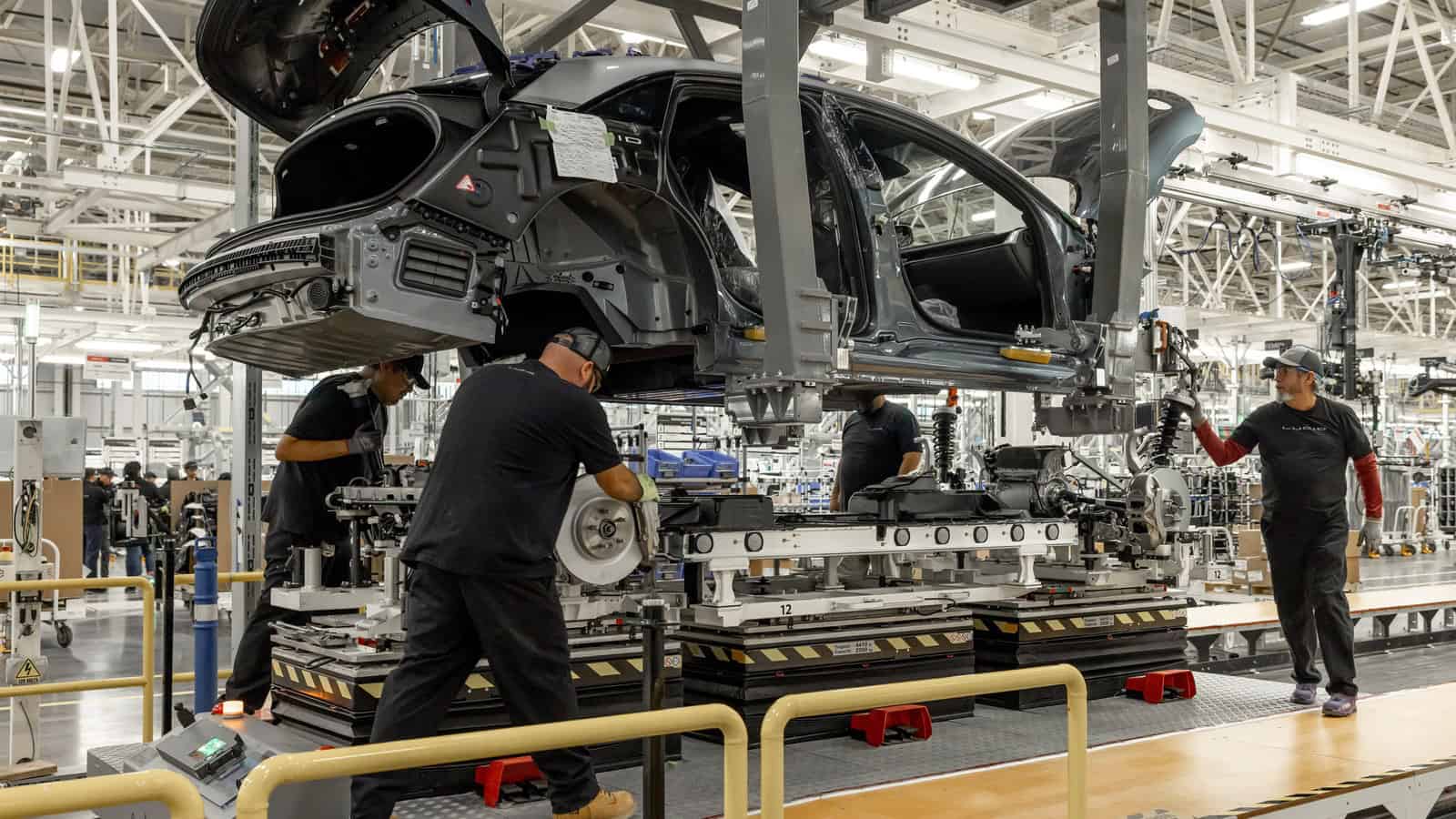
Lucid has already made one of the most energy-efficient cars on the market. Now the company is on a mission to strengthen supply chains for the critical materials powering its award-winning vehicles.
Supply chain warrior: The California-based electric vehicle manufacturer—whose 2025 Air Pure sedan is the first EV to achieve a milestone 5 miles of range per kilowatt of energy—recently reached an agreement with Alaskan mining exploration company Graphite One to purchase synthetic graphite for its vehicles’ battery packs.
- The deal, which goes into effect in 2028, is a crucial first step toward cementing a domestic supply chain of graphite, a mineral that makes up about half of every EV’s battery composition. EV batteries require both synthetic and natural graphite.
- “Today 100% of the graphite for batteries assembled in the U.S. comes from overseas,” said Lucid Motors Supply Chain Group Manager of Battery Raw Materials Michael Parton. “Building a robust domestic supply chain ensures the United States and Lucid will maintain technology leadership in this global race.”
Pandemic lesson: The global pandemic revealed the downside of depending on other nations for critical materials, and the importance of cultivating domestic sources instead.
- In 2020, “every company experienced major challenges when it came to shutdowns and global trade,” Parton said. “Having a domestic supply reduces production risk, accelerates response time and agility and lowers the need to carry higher levels of inventory.”
A midstream gap: When it comes to EV batteries and their supply chains, “much of the discussion is on localizing the bookends of the supply chain, the downstream battery production and the upstream mineral extraction,” Parton told us.
- Less discussed is the “midstream environment,” which comprises the precursor cathode active materials (P-CAM) and cathode active materials (CAM) stages. Materials used during these phases in the battery production process include critical minerals such as lithium, nickel and cobalt.
- The P-CAM market has been a difficult one to navigate, Parton added. For years, the P-CAM stage has been outsourced to countries with more cost-effective production. The problem: These countries also have less stringent environmental regulations than the U.S.
- “There’s limited investment announced [in the U.S.] in the refining and chemical conversion process at these stages, but it’s where the real need is,” Parton continued. “To promote localized sources of supply for mined and recycled minerals, there needs to be a domestic option for both P-CAM and CAM.”
A bipartisan issue: Lucid’s advocacy for a strong domestic supply chain has won bipartisan support in Congress.
- “There’s something in it for everyone when it comes to efficiency,” said Lucid Motors Senior Manager of International and Trade Policy Emily Patt, citing the environmental and self-sufficiency benefits of a resilient domestic supply chain.
What’s next: Lucid is expanding its vehicle lineup beyond the Air and the vehicle’s four trim levels.
- By the end of 2024, the company is scheduled to start production of the seven-passenger Lucid Gravity. The company has also teased an upcoming midsize platform, which is expected to start production in late 2026.
The grand vision: “The pursuit of efficiency drives Lucid as a company,” Patt said. “We’re not just making zero-emission cars; we’re committed to making the best use of the world’s resources to maximize the benefits for electrification and the planet.”
How Manufacturers Find Workforces for New Sites
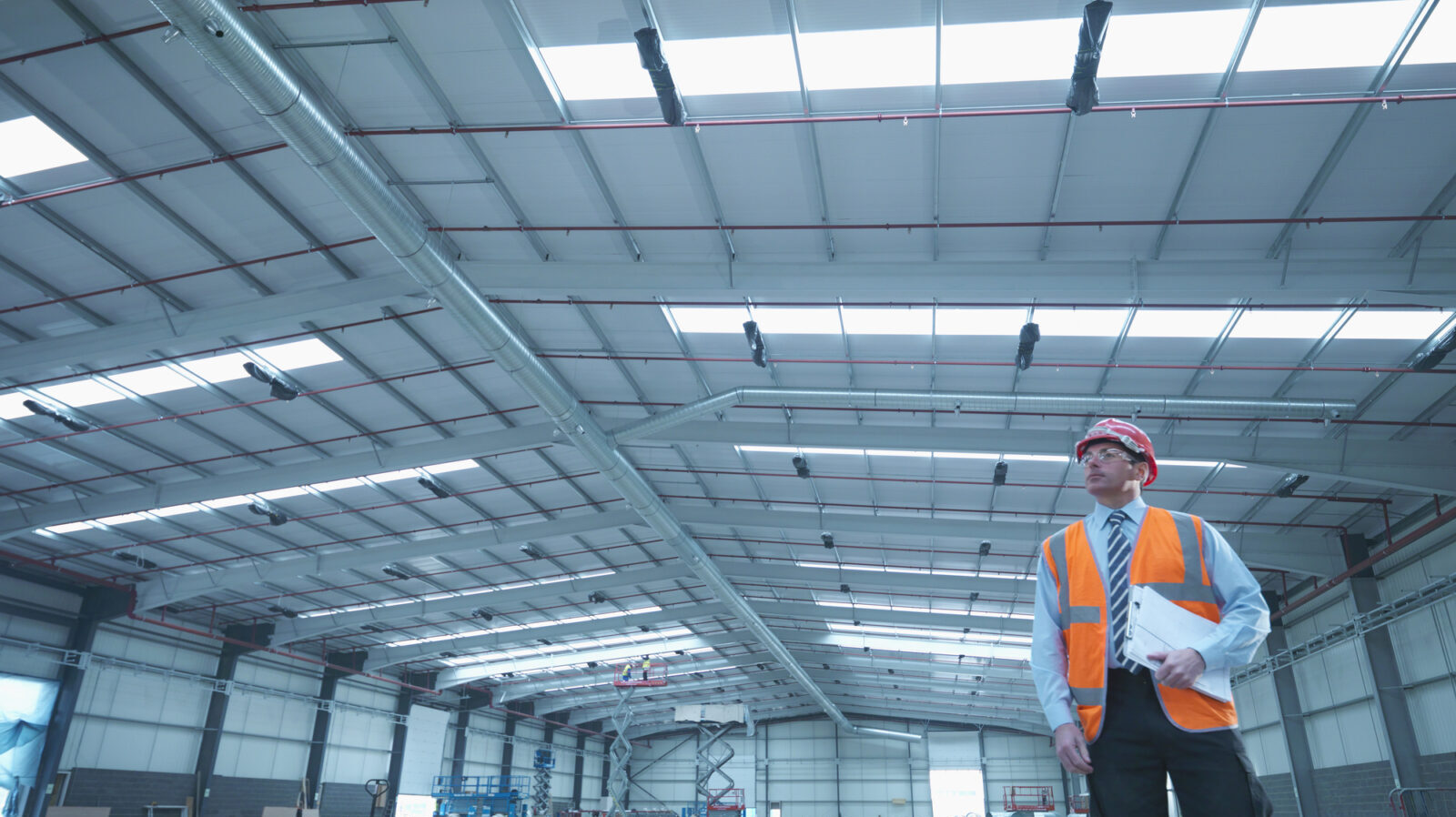
When a manufacturer is thinking about pouring millions or billions of dollars into a new facility, its leaders have a million or billion questions to go with it. Atlas Insight, the NAM’s partner for its Incentives Locator, helps manufacturers answer the biggest question—where?—with a combination of on-the-ground research, data gathering, relationship-building and more.
We talked to Atlas’ managing partners, Brian Corde and Kathy Mussio, who offered us a peek into this crucial process. Here’s what they had to say.
The “number-one factor”: While manufacturers typically prioritize access to raw materials and customers when choosing new sites, over the past 10 years the “number-one factor” for manufacturers has been talent, said Corde. How do you evaluate a workforce for jobs that don’t yet exist?
- First, Atlas looks for locations that already have companies in the same sector as its client, which is an indication of a local pool of talent.
- It then combs through a huge amount of data, including metrics like employment concentration (how likely are you to find a specific job function in that area?), local demographics (is the population expanding or contracting?) and much more.
Decoding the data: Let’s say an area had 500 people working in nonwoven textiles in 2018, Corde posited, but only 250 today; does that mean a new company in that sector won’t find the talent it needs?
- Not necessarily, he told us. While it could mean that workers with those skills have moved out of town, it may also indicate that an existing factory closed, forcing employees to find other lines of work. If a new textile facility opens, they might decide to return to their old industry.
- How does Atlas figure out if those workers might come back? One strategy is to have researchers scour the resumes posted on internet job boards—the more local job seekers who list textile experience, the more likely a new facility will find a skilled and eager workforce.
Drawing on local relationships: Just as important to the data crunching are Atlas’ ties to the local economies, Corde and Mussio said. Atlas has relationships with economic developers all over the country, giving it unparalleled insight into what’s happening in those communities.
- Ten years ago, Mussio said, these organizations might not have needed to find workers for new companies, but today they are in the workforce business—and some are even offering incentives to attract more residents to their communities.
Workforce training: Manufacturers also take a keen interest in local training programs when choosing sites and have many options for partnering with them, Corde said.
- In some cases, a company pays for colleges and tech schools to train their workers, in a simple cash deal. But other states, like Virginia, South Carolina and Georgia, will fund the training on a “preemployment basis” and allow prospective employers to observe the class before recruiting any of its students. That way, employers can observe soft skills before they even begin the hiring process.
Searching for sustainability: While their workforces might be top of mind, companies also prioritize sustainability when selecting their new sites. Some may look for natural gas, some nuclear, some solar—the configuration will be different for every manufacturer and every location, Corde and Mussio said.
- One large company was looking for a new location where it could build an enormous field of solar panels to support its operations. Atlas informed the company that some local governments might be reluctant to give them so much land, which could otherwise host another business.
- These types of considerations may not occur to a company, which is why Atlas stands ready to explain local concerns to manufacturers, as well as vice versa.
- In the end, the manufacturer did indeed get its solar field.
Take the plunge: If you are looking for expert guidance in your next site search, check out the NAM Incentives Locator. NAM members will receive a complimentary initial assessment call with an expert and a preferred rate on any services contracted—not to mention the benefit of the exhaustive and proprietary database that Atlas has created to assist with manufacturing projects.
Stay tuned . . . for part two, in which we discuss how Atlas helps companies get significant funding from local, state and federal incentives for their projects.
Ports Negotiations Break Down
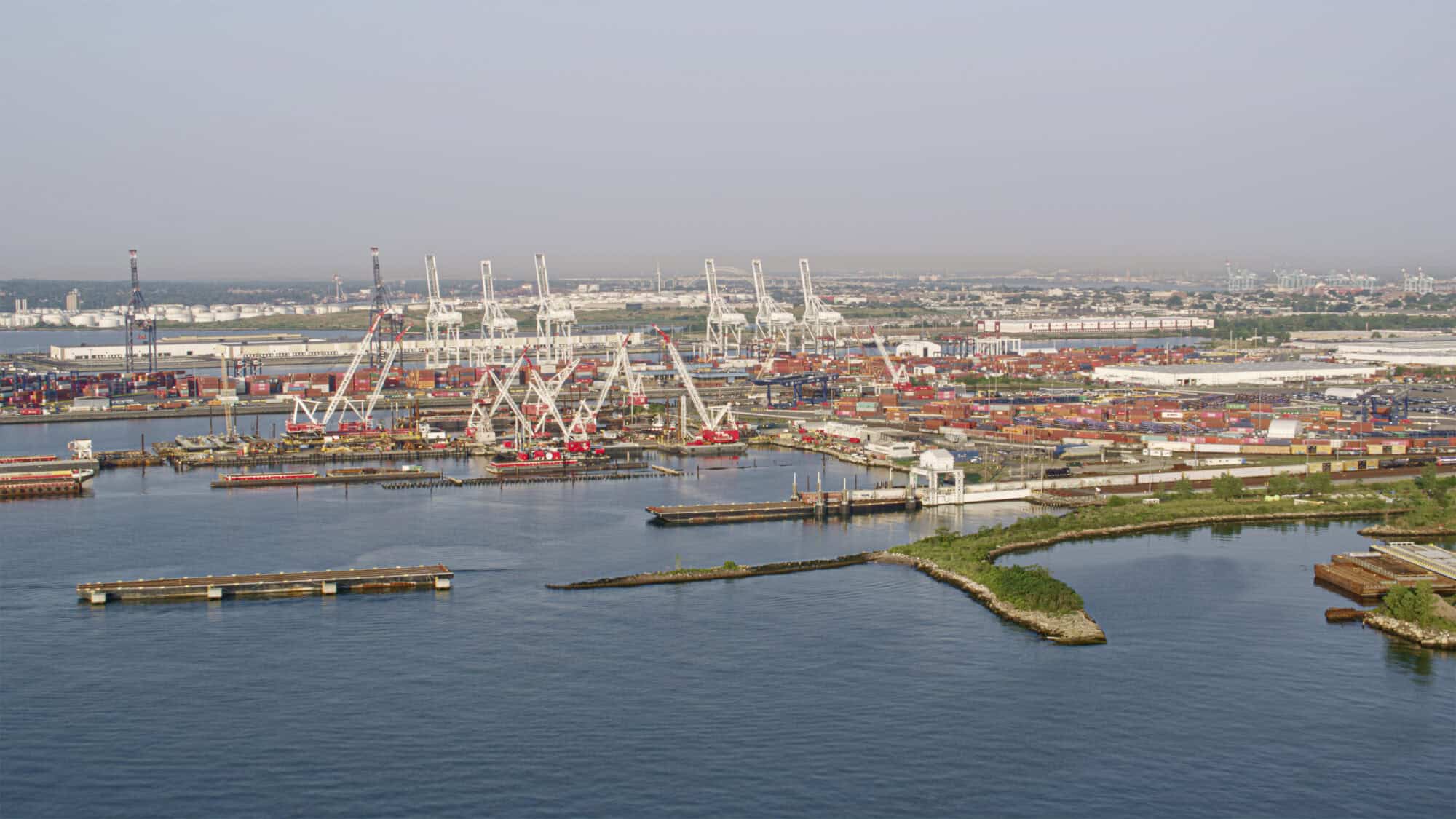
Negotiations between the U.S. Maritime Alliance and the International Longshoremen’s Association have stalled again, “raising the possibility of renewed strikes at U.S. East and Gulf Coast ports in January” (gCaptain).
What’s going on: Talks between the dockworkers and their employers broke down this week over proposed language regarding the use of automation, according to the ILA.
- “This impasse follows a tentative agreement reached in early October, which ended a three-day strike across Atlantic and Gulf Coast ports” and extended the workers’ labor contract until Jan. 15, 2025.
- If the parties are unable to reach a long-term agreement by that date, the union could strike again.
Why it’s problematic: Even a brief work stoppage could have major economic consequences, according to widely cited NAM estimates.
- A strike at East and Gulf Coast ports would jeopardize $2.1 billion in trade every day and could reduce gross domestic product by up to $5 billion a day.
What must be done: “These ports are critical components of the manufacturing supply chain and move products on which Americans depend,” said NAM Director of Transportation, Infrastructure and Labor Policy Max Hyman. “Both sides should return to negotiations as soon as possible and reach a lasting resolution that prevents needless economic destruction.”
Inflation Ticks Up

Inflation rose again last month (The Wall Street Journal, subscription).
What’s going on: The consumer price index increased 0.2% in October, the fourth consecutive increase (Bureau of Labor Statistics).
- “[P]rices were up 2.6% from a year earlier, in line with economists’ expectations. Core inflation, at 3.3%, also matched forecasts,” according to the Journal.
The details: Shelter prices rose 0.4% in October, accounting for more than half the increases overall (BLS).
- Food prices inched up 0.2%, while energy prices were unchanged after having declined 1.9% in September.
What it means: The news strengthened investor confidence that the Federal Reserve will cut rates in December for the third time this year in an effort to hit its 2% inflation goal, the Journal reports.
- “The October CPI report will likely support the notion that the last mile of inflation’s journey back to target will be the hardest,” Wells Fargo economists wrote in a memo to clients (USA Today).
Nominations Open for the 2025 Manufacturing Leadership Awards

Nominations for the Manufacturing Leadership Council’s flagship awards are now open.
What’s going on: The Manufacturing Leadership Awards—given annually by the MLC, the NAM’s digital transformation arm—honor manufacturing companies and leaders for the groundbreaking use of digital manufacturing. Those interested in submitting company and/or individual names for consideration for the 2025 awards can do so through Jan. 17, 2025.
- Awards will be given in nine project categories and three individual categories. New for 2025 are Business Model Transformation (for projects) and Women in Manufacturing 4.0 (for individuals).
How they’re evaluated: For the individual categories, the judges—a panel of established digital manufacturing experts from outside the MLC—assess whether nominees have advanced digital transformation at their companies and whether they meet the criteria for being role models to other manufacturing leaders.
- For the project categories, judges evaluate how each undertaking improved manufacturing processes, furthered business goals and advanced company strategy.
What happens next: Finalists will be notified in March 2025 and announced shortly afterward. Winners will be announced at the Manufacturing Leadership Awards Gala next June.
- “The Manufacturing Leadership Awards give the MLC the chance each year to honor some of the remarkable people and endeavors in manufacturing today,” said MLC Senior Content Director Penelope Brown. “We look forward to reviewing the nominations and learning more about the incredible innovation taking place in our industry.”
Get involved: Have a person or project in mind for the 2025 Manufacturing Leadership Awards? Submit their names here.
- MLC members receive one complimentary project entry and one complimentary individual entry.
